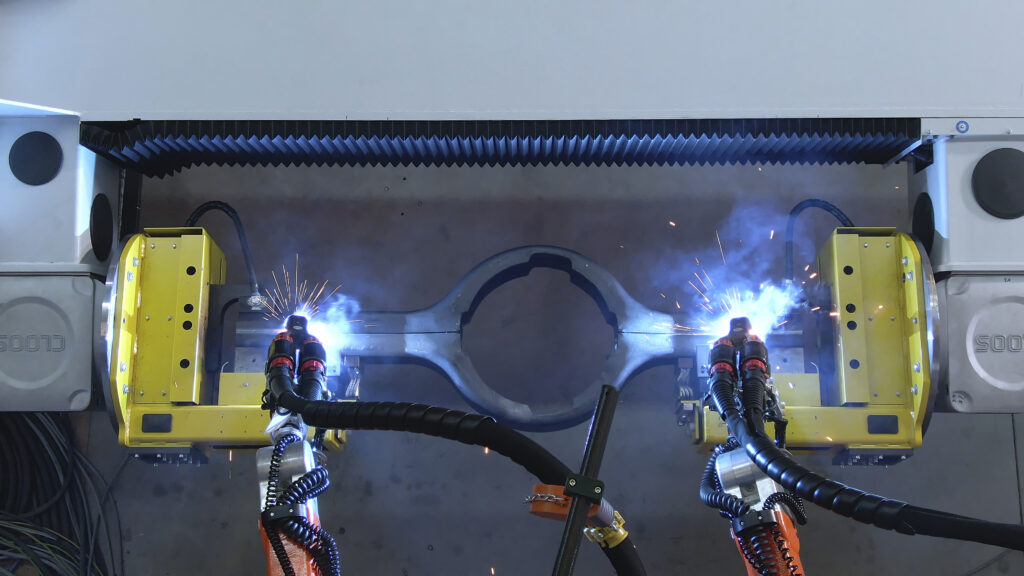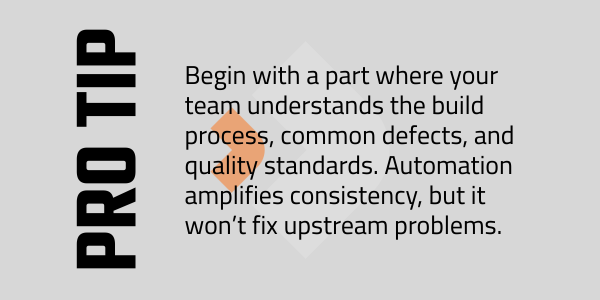Don’t Automate Everything. Start Where It Works.
If you’re looking at robotic welding, your first question probably isn’t “Can it weld?” It’s “Where do we start?”
You don’t need to automate your entire shop on day one. The smartest teams begin with one part, prove it out, and scale from there. So which parts make the best starting point?
Here are six real-world part types that typically get automated first and why they work.

One: Hitch Plates and Brackets
Why they work:
Flat parts with known thickness and short, consistent welds. Minimal fixturing. Easy to program. Quick ROI.
Common in:
Agriculture, construction, light trailer builds
Two: Crossmembers and Frames
Why they work:
Long seams with basic weld access and repeatable setups. Ideal for rotary or linear table cells.
Common in:
Truck and trailer fabrication, structural weldments
Three: Boom Arms and Structural Tubes
Why they work:
Heavy parts with defined weld paths. Weld quality matters. Often paired with positioners or manipulators for better access.
Common in:
Heavy equipment, mining, crane components
Four: Axle Components and Housings
Why they work:
High volume and consistent geometry. Good candidates for tight fixturing and repeatable weld processes.
Common in:
Automotive, trailer, off-highway manufacturing
Five: Subframes and Cradle Assemblies
Why they work:
Multiple subassemblies with tack welds. Robots help reduce distortion and ensure consistency.
Common in:
OEM parts, rail systems, utility equipment
Six: Fuel Tanks and Pressure Vessels
Why they work:
Sensitive to heat input and leak risk. Robots help maintain consistent bead size and seam location.
Common in:
Industrial equipment, energy, transport

Ready to See If Your Part Fits?
Send us your part for a quick weldability review. No charge. No guesswork.
